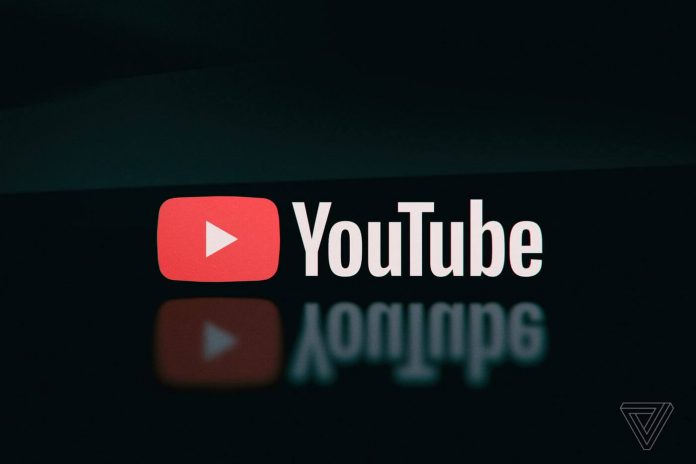This article is written by Ms. Anushi Agarwal, from Symbiosis Law School, Pune. This is an exhaustive article that deals with whether it is legal if someone uploads your video on the internet or YouTube without your consent, legal remedies that are available and ways to take them down.
Table of Contents
Introduction
If you discover that someone posted either photos or videos of you or your family on a social media site without your permission, the first thing to know is that it is illegal. Keep in mind that every platform has a different privacy policy, so the individual that posts may think they did nothing wrong.
However, if the images or videos belong to you, there are three ways that you can take control, including citing invasion of privacy, defamation, and a violation of the right of publicity. Just like social media site policies, these three methods of recourse are unique. For help in navigating through them or to proceed with an actual lawsuit, contact a qualified attorney.
Invasion of privacy
If the person posted in a way that portrays you falsely or in an offensive manner, then you can take the appropriate action. For instance, if your local sheriff’s department has a “Ten Most Wanted” list and someone adds your photo to it, that would be an invasion of privacy. Another example is using your photograph to create a page on a pornographic website. Although taking a photo of you in a public setting is not an invasion of privacy, if the person captures you in your home and then uses it on social media without your consent, you have legal recourse. An attorney may classify this type of action as defamation as well.
Defamation
To prove defamation, the photo posted by someone else on a social media site would have to defame you. That means the image would harm your reputation or create a false impression of you. If an individual or company uses a photo or video that makes it appear you committed a crime when, in fact, you did not, and you or your business suffered as a result, that would fall into the category of defamation.
Right to publicity
In this case, someone uses a photo of you for commercial purposes. In other words, if that individual posts your image to promote a product or service online or as an endorsement on a business site without your permission, he or she has violated your right of publicity. For this type of violation to occur, the public must be able to identify you in the photo used.
Because all the major social media sites, including Facebook, Twitter, and others collect data about their users all the time, a situation where your image or a video shows up can be somewhat confusing. By hiring an attorney who specializes in this issue, he or she can investigate and research to determine if you are in a position to take legal action.
If you find your image or a video posted that you did not authorize, you might try to reach out to the individual who posted it if you know who it is and demand to remove it. If that person refuses, you can then take a legal stance. For more information or you find yourself in this situation, never feel embarrassed about contacting a reputable attorney.
As per Indian laws, what happens when a person’s video is leaked and posted on the Internet or YouTube
The Government has provided all citizens with the Right to life and personal liberty under Article 21 of the Constitution and the same may be invoked to cast a duty on the Government. There are criminal offences under The Information Technology Act, 2000, such as unlawful access to computer resources (that is without permission), disclosure of computer records and altering computer data without permission, which may apply.
The penalties for offences are listed later. However, to ascertain which provisions under the Information Technology Act, 2000 would apply first we would need to establish how the hackers gained access to the photographs.
While the IT Act does have extra-territoriality, I doubt there could be an easy identification of jurisdiction (and consequently the laws) for raising a claim in such a situation. The hacker, the cloud provider, the data and the Indian celebrity victim may all be in different countries (and subject to different laws).
Laws relating to Information Technology, sexual harassment and violation of fundamental rights will help in registering a complaint or filing a case. Photography in public is not prohibited by the law, but you can still take legal action against those who invade your privacy and misuse your pictures or videos.
The law makes it clear you are free to take pictures for the private use of other people in public areas under the Constitution of India Article 19, however publishing a video in a manner that might be “embarrassing, mentally traumatic” or causing “a sense of insecurity about the activities the person in the video is involved in” is illegal under Article 21. In this case, we can be sure the experience is beyond traumatic.
How to get a video removed from YouTube
YouTube has a highly organized inbuilt programme that has platforms for video-sharing that is used by business owners to gain brand exposure. One major problem that the site faces is its sheer volume of users all the time. Youtube estimates that users worldwide upload approximately 72 hours of video content every 60 seconds. Due to this many users can misuse the platform for uploading content that violates YouTube’s Terms of Service and copyright laws, also that may violate the rights of an individual.
And the users can often initially get away with uploading such content. If a person finds a video that infringes his/her rights or causes offence for other reasons, YouTube has a flagging feature that can be used to remove such video. To do the same:
- Click the flag icon below a video on YouTube to open the Report This Video area.
- Select an issue that makes you report this video, such as “Infringes my copyright” or “invades my privacy” options.
- If available, add the additional details about the content that has been uploaded and that has led to the infringement in the field below the timestamp, if prompted.
- Click the option of “submit” to send the report. The report as per the policy of YouTube is reviewed by a staff member within 24 hours of submission of the report. If the complaint made is found valid, then the content is deleted from the platform and YouTube can officially sue or penalize the user.
Copyright violation
When someone infringes on copyright — whether it’s someone doing it to you or you do it to someone else — there will be consequences. YouTube takes the breach seriously and will take down the infringing video. It also penalizes the offender with a strike.
If you created the video, the copyright belongs to you; if you upload content created by someone else, the copyright belongs to that person, and you better have had the permission to do it. As soon as the work is created, so is the copyright, and since 1992, there’s no longer a renewal process. Copyright lives with the creator — and even lives on for a period after the death of the creator.
YouTube takes copyright issues seriously — and it blocks or takes down any video that infringes on copyright. Two things can happen, and though they sound similar, they’re completely different: Takedown notice and Content ID match.
- Takedown notice: If someone notices content they’ve created being used without their permission, they can send YouTube a complaint. If it’s a breach, YouTube takes down the video.
- Content ID match: Content ID is a system YouTube uses to automatically match the content that violates copyright against the millions of videos uploaded every month to the site. For Content ID to work properly, copyright owners have to upload so‐called reference files — original versions of their work that prove they own the rights.
YouTube’s primary objection is the impossibility of monitoring the millions of videos that are uploaded every day, and the impediment to free speech if it self-polices its content. YouTube, however, is already doing both these things with respect to copyright violations. Copyright infringement suits, such as Viacom’s 2007 suit demanding $ 1 billion in damages, have been filed against YouTube, on the grounds that it is profiting from illegal content on its site (ad revenues). Though YouTube won the suit, it found the need to protect itself from such suits in the future. To this end, YouTube developed an innovative, technological solution to the problem – Content ID.
Conclusion
Nobody can publish a video in which a person can be recognized unless that person has permitted to do so. This includes publishing in a newspaper, magazine, or advertisement, or on social networks. If the publication of the video harms the self-esteem of a person and makes him/her uncomfortable or causes stress then the person can approach the court and can penalize the one who published without ob training consent.
When you publish information about someone without permission, you potentially expose yourself to legal liability even if your portrayal is factually accurate.
Most states have laws limiting your ability to publish private facts about someone and recognizing an individual’s right to stop you from using his or her name, likeness, and other personal attributes for certain exploitative purposes, such as for advertising goods or services.
These laws originally sprang from a policy objective of protecting personal privacy; the aim was to safeguard individuals from embarrassing disclosures about their private lives and from uses of their identities that are hurtful or disruptive of their lives.
Over time, the law has developed and also recognized the importance of protecting the commercial value of a person’s identity — namely, the ability to profit from authorizing others to use one’s name, photograph, or other personal attributes in a commercial setting.
References
LawSikho has created a telegram group for exchanging legal knowledge, referrals, and various opportunities. You can click on this link and join:
https://t.me/joinchat/J_0YrBa4IBSHdpuTfQO_sA
Follow us on Instagram and subscribe to our YouTube channel for more amazing legal content.
 Serato DJ Crack 2025Serato DJ PRO Crack
Serato DJ Crack 2025Serato DJ PRO Crack











 Allow notifications
Allow notifications



